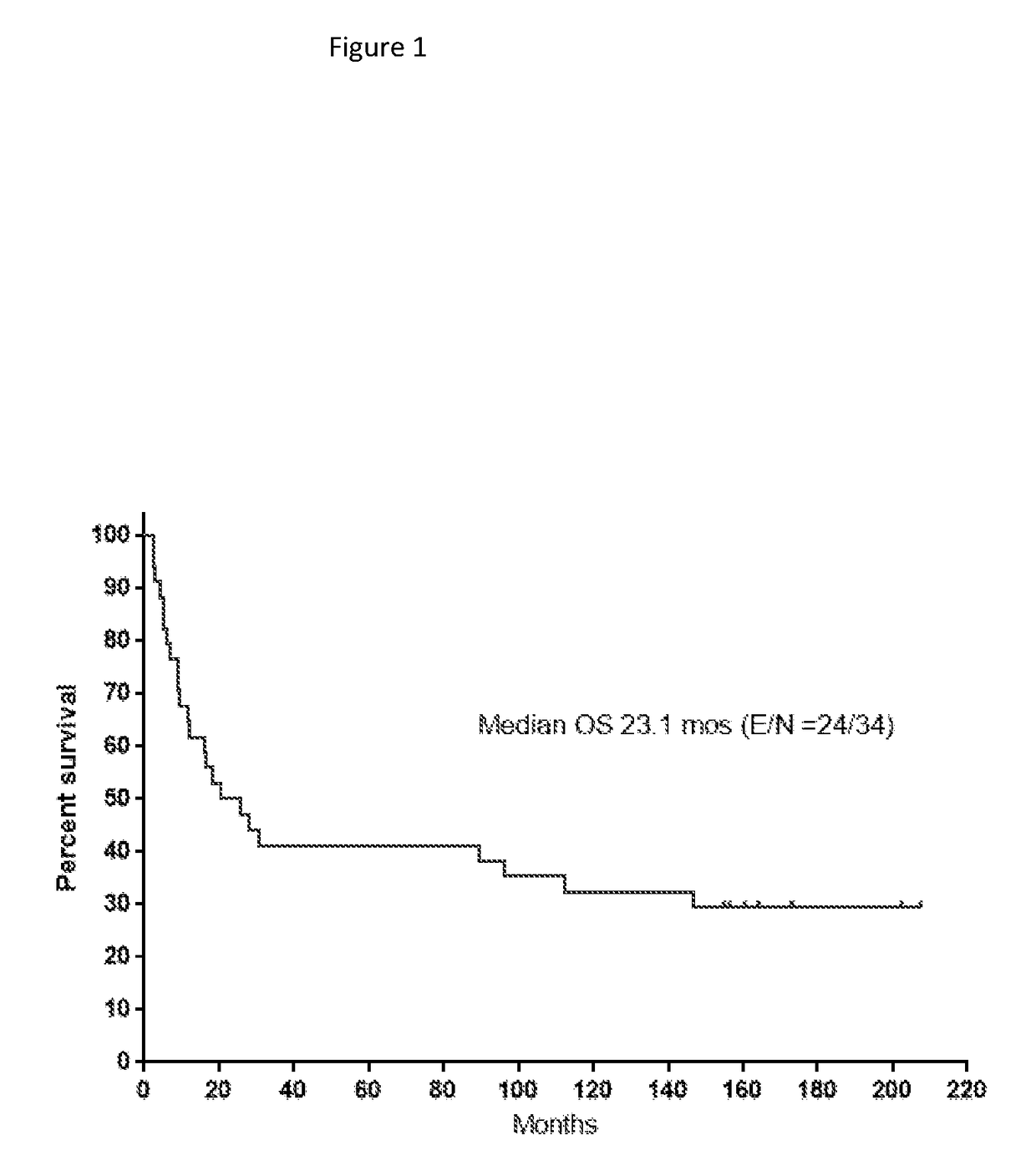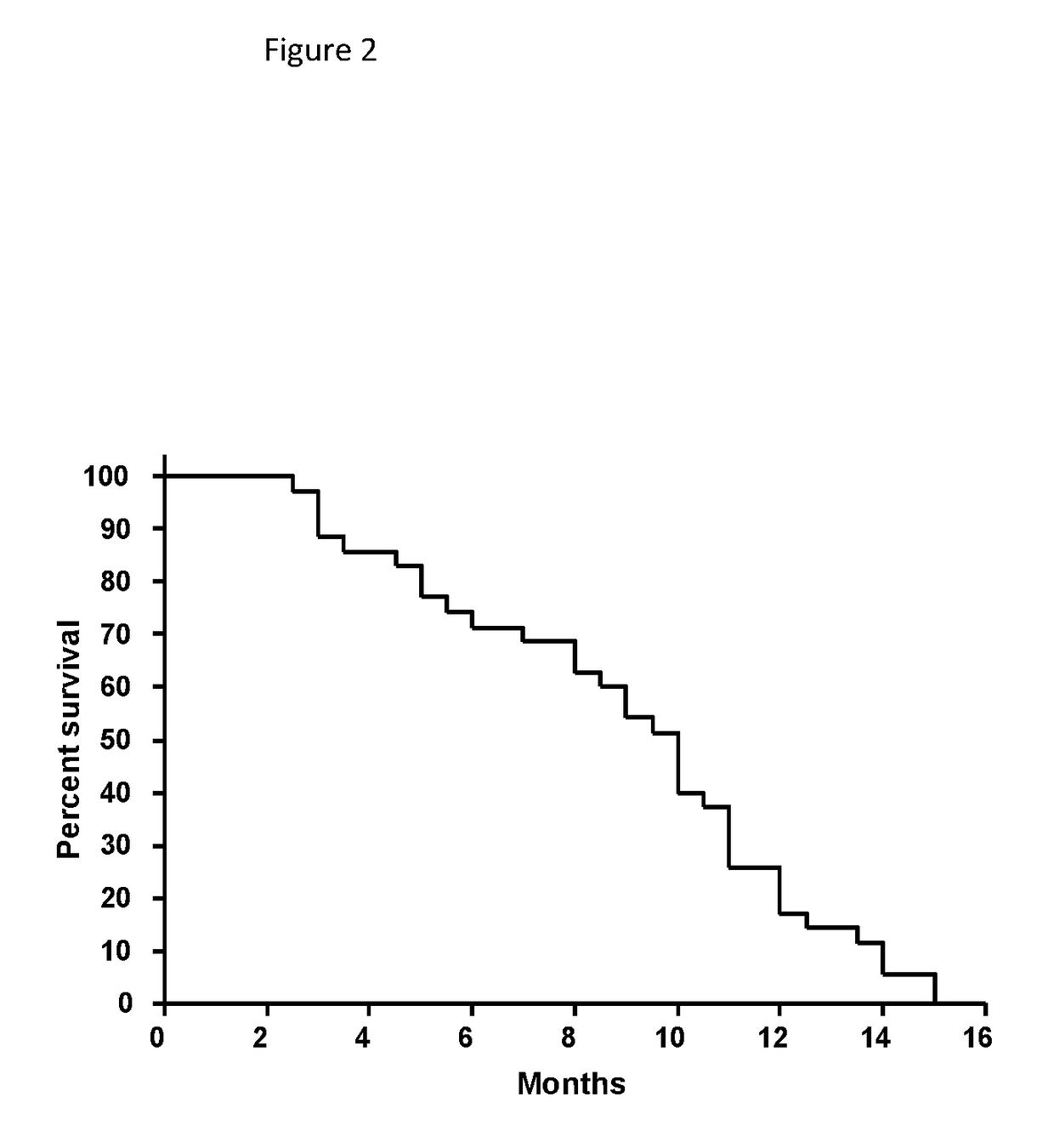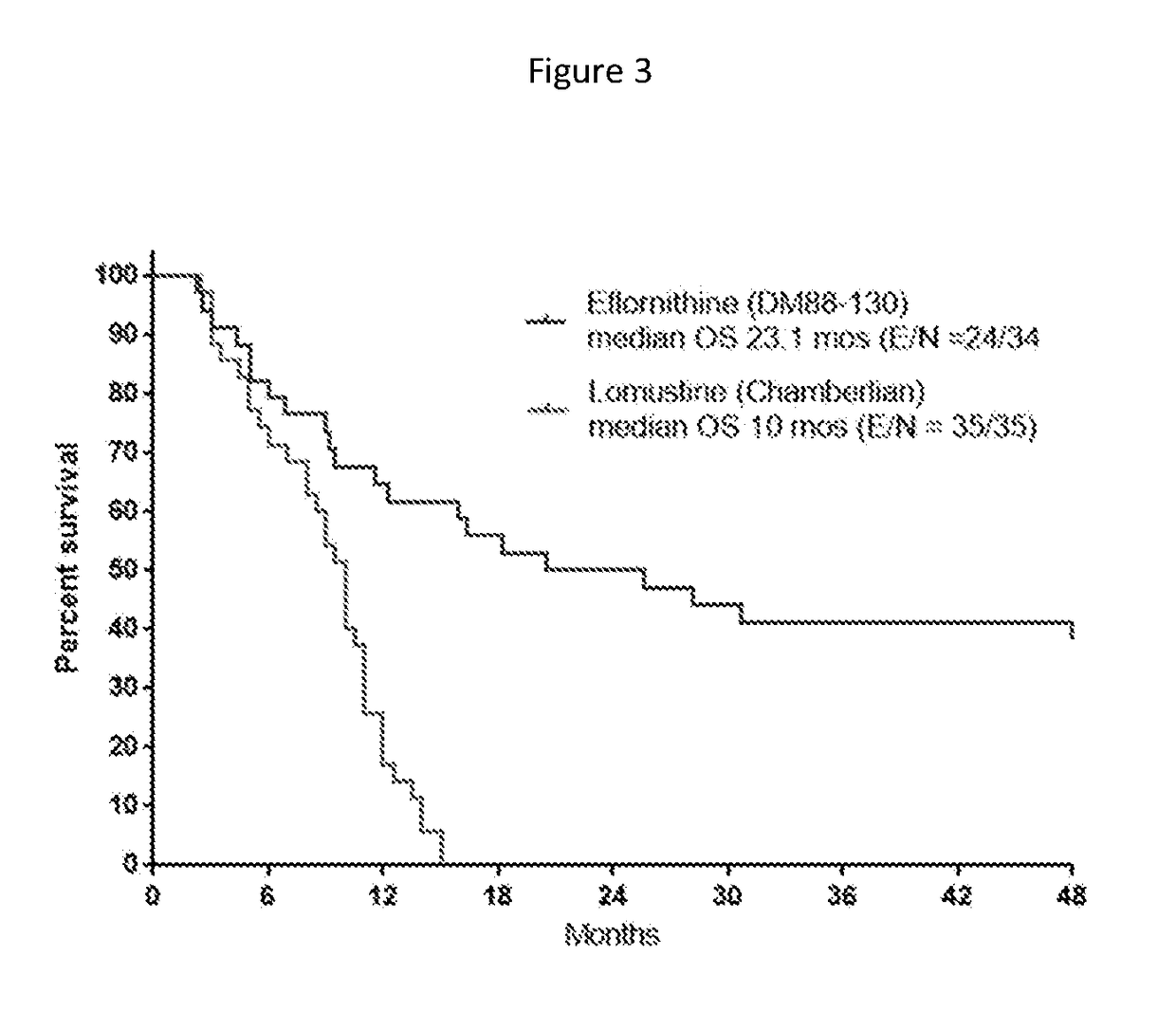Compositions and methods for use of eflornithine and derivatives and analogs thereof to treat cancers, including gliomas
- Summary
- Abstract
- Description
- Claims
- Application Information
AI Technical Summary
Benefits of technology
Problems solved by technology
Method used
Image
Examples
example
Toxicity of Eflornithine
[0226]The toxicity produced by eflornithine from the original Phase 2 randomized study (Levin et al., 1992) of AG and GBM patients treated at recurrence is shown in Table 1. In this study, eflornithine was administered at a dose of 3.6 g / m2 every 8 hours for 14-days out of 21-days. At this dose, 13%, 16%, 3%, and 1% of patients receiving eflornithine reported diarrhea at toxicity grades 1 through 4, respectively. In exceptional cases, it was noted that dividing the daily eflornithine dosage from 3 times daily to 4 to 6 smaller doses proved an effective relief from the diarrhea which was considered to be due to the osmotic load of the oral eflornithine on the gastrointestinal tract. In this study, hematological toxicity appeared to be very acceptable requiring little in the way of eflornithine dose reduction.
TABLE 1Summary of Relevant Adverse Events Attributed to Eflornithine in a Phase 2 Study on Tumor Recurrence / Progression (N = 89)ToxicityToxicityToxicityTo...
PUM
| Property | Measurement | Unit |
|---|---|---|
| Fraction | aaaaa | aaaaa |
| Fraction | aaaaa | aaaaa |
| Fraction | aaaaa | aaaaa |
Abstract
Description
Claims
Application Information
 Login to View More
Login to View More - R&D
- Intellectual Property
- Life Sciences
- Materials
- Tech Scout
- Unparalleled Data Quality
- Higher Quality Content
- 60% Fewer Hallucinations
Browse by: Latest US Patents, China's latest patents, Technical Efficacy Thesaurus, Application Domain, Technology Topic, Popular Technical Reports.
© 2025 PatSnap. All rights reserved.Legal|Privacy policy|Modern Slavery Act Transparency Statement|Sitemap|About US| Contact US: help@patsnap.com



